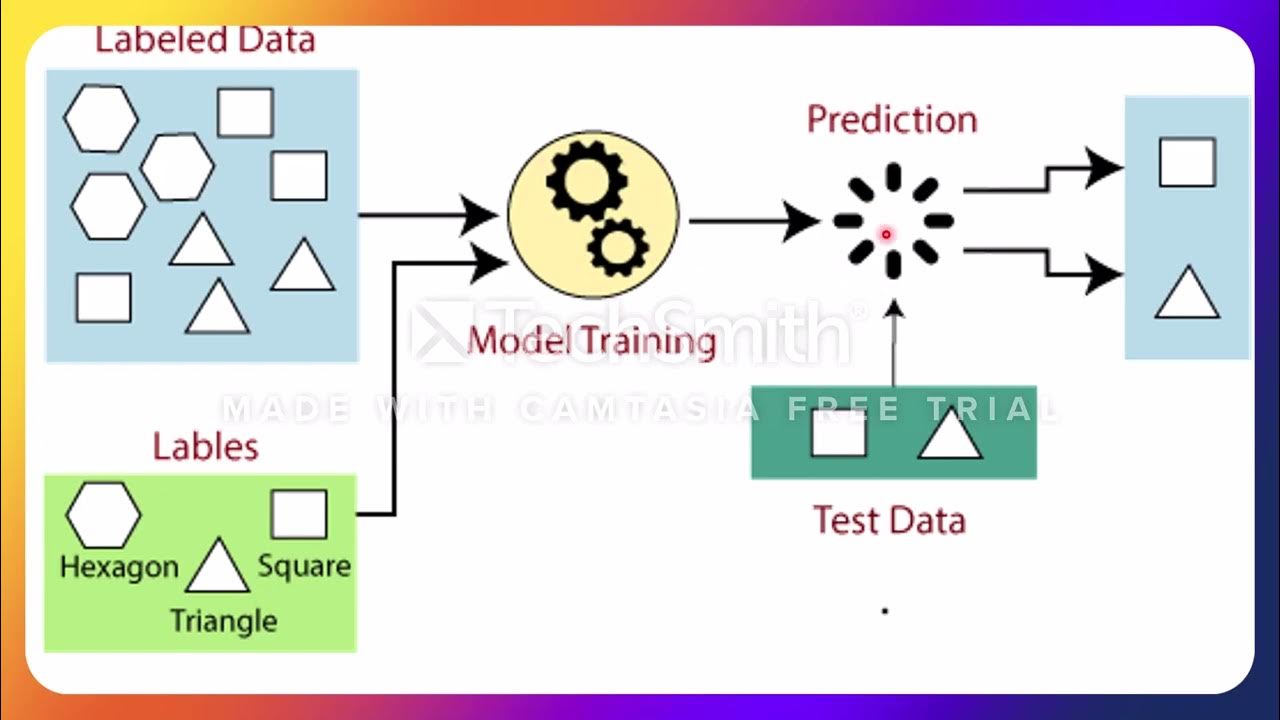#6 Machine Learning Specialization [Course 1, Week 1, Lesson 2]
Summary
TLDRThis video script delves into unsupervised learning, the second most widely used form of machine learning after supervised learning. Unlike supervised learning, which uses labeled data, unsupervised learning deals with data without any output labels. The script explains clustering, a type of unsupervised learning where algorithms group unlabeled data into clusters based on patterns. Examples include Google News clustering related articles and DNA microarray data to categorize individuals. The script also touches on market segmentation, illustrating how unsupervised learning can identify distinct customer groups for targeted services.
Takeaways
- 📚 Unsupervised learning is a type of machine learning where the algorithm is not provided with labeled data, unlike supervised learning.
- 🔍 The main goal of unsupervised learning is to find structure or patterns within data that does not have associated output labels.
- 👨🔬 In unsupervised learning, algorithms are tasked with discovering interesting insights or structures without being guided by correct answers.
- 📊 A key example of unsupervised learning is clustering, which groups unlabeled data into different clusters or categories.
- 🐼 Google News uses clustering algorithms to automatically group related news articles together based on shared keywords.
- 🧬 Unsupervised learning is also applied in genetic research, where clustering algorithms help categorize individuals based on DNA microarray data.
- 💼 Companies use unsupervised learning for market segmentation, automatically grouping customers into different market segments to better serve them.
- 🤖 Algorithms in unsupervised learning operate without human supervision, figuring out patterns and structures on their own, which is crucial for handling large and complex datasets.
- 🌟 The Deep Learning AI team used unsupervised learning to identify distinct groups within their community, such as those seeking knowledge, career development, or staying updated on AI trends.
- 🔑 Unsupervised learning is not limited to clustering; it encompasses various algorithms designed to explore and understand data without predefined labels.
Q & A
What is unsupervised learning?
-Unsupervised learning is a type of machine learning where the algorithm is given data without any associated output labels. The goal is to find structure or patterns within the data without any guidance on what constitutes the 'right' answer.
How does unsupervised learning differ from supervised learning?
-In supervised learning, each example is associated with a label, and the algorithm is trained to predict these labels. In contrast, unsupervised learning involves data without labels, and the algorithm must discover patterns or structures on its own.
What is a clustering algorithm and how is it used?
-A clustering algorithm is a type of unsupervised learning algorithm that groups unlabeled data into different clusters or categories based on similarities. It's used in various applications, such as grouping news articles by topic or categorizing genetic data.
Can you provide an example of how clustering is used in Google News?
-Google News uses clustering algorithms to group related news articles together. For instance, articles about a 'giant panda giving birth to rare twin cubs' would be clustered together, with the algorithm identifying common words like 'panda', 'twin', and 'zoo' to form the cluster.
What is the purpose of using clustering algorithms in DNA microarray data?
-In DNA microarray data, clustering algorithms are used to group individuals based on their genetic or DNA activity. This helps in identifying different types of people or categories based on their genetic similarities without prior knowledge of these types.
How does unsupervised learning help in market segmentation for companies?
-Unsupervised learning can be used to automatically group customer data into different market segments. This allows companies to better understand their customer base and serve them more efficiently by tailoring their services to the needs of each segment.
What is the role of unsupervised learning in understanding the Deep Learning.ai community?
-Unsupervised learning was used by the Deep Learning.ai team to identify distinct groups within their community based on motivations for learning. This helps them to better serve their audience by understanding the major categories of learners and their primary goals.
Why is it not feasible for Google News to manually cluster news articles?
-It is not feasible for Google News to manually cluster news articles due to the vast number of articles published daily and the dynamic nature of news topics. An algorithm can process and categorize this volume of data more efficiently.
How does the clustering algorithm determine which articles to group together?
-The clustering algorithm identifies articles that mention similar words and groups them into clusters. It does this without human supervision, learning from the data itself which words and patterns are indicative of related content.
What are some other types of unsupervised learning algorithms besides clustering?
-Besides clustering, other types of unsupervised learning algorithms include dimensionality reduction techniques like PCA (Principal Component Analysis), association rule learning, and anomaly detection methods.
Outlines

This section is available to paid users only. Please upgrade to access this part.
Upgrade NowMindmap

This section is available to paid users only. Please upgrade to access this part.
Upgrade NowKeywords

This section is available to paid users only. Please upgrade to access this part.
Upgrade NowHighlights

This section is available to paid users only. Please upgrade to access this part.
Upgrade NowTranscripts

This section is available to paid users only. Please upgrade to access this part.
Upgrade Now5.0 / 5 (0 votes)





